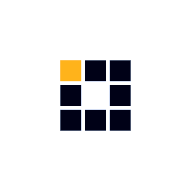PgO Scientific journal
ISSN 2660-7182
Publication standards
Welcome to the Scientific Journal Postgraduate Dentistry
Below you will find the categories and style guides for the creation of articles in the PgO Scientific Journal.
Article categories
The following types of manuscripts are accepted:
categorias
Your content goes here. Edit or remove this text inline or in the module Content settings. You can also style every aspect of this content in the module Design settings and even apply custom CSS to this text in the module Advanced settings.
Teaching articles
Teaching articles are documents written by one or more authors following the indications of the team of professors of one of the graduate programs of PgO-UCAM and whose purpose is to explain a topic of teaching interest to students or those interested in that program.
The following are some guidelines:
Typically, teaching articles will contain data of formative interest.
There are no minimum length requirements for original articles. In general, original articles should not exceed 5,000 words.
A structured abstract of no more than 250 words is required.
References should be limited to no more than 50.
The structured abstract, references, tables and figures are not included in the 5,000-word limit.
Original articles should include no more than eight tables/figures.
Original articles
Original articles are reports of clinical or laboratory investigations or case series of direct relevance to some area of dentistry. Original articles are also general dental research of relevance to dental practitioners and researchers.
The following are some guidelines:
Typically, original articles will contain new data derived from a series of patients or subjects.
There are no minimum length requirements for original articles. In general, original articles should not exceed 5,000 words.
A structured abstract of no more than 250 words is required.
References should be limited to no more than 50.
The structured abstract, references, tables and figures are not included in the 5,000-word limit.
Original articles should include no more than eight tables/figures.

Plagiarism check
The editorial board will carefully monitor papers submitted to the scientific journal PgO. All submitted manuscripts will be compared with published papers using similarity checking software (iThenticate).
Plagiarism includes Verbatim copying: reproducing a work word for word, in whole or in part, without permission and acknowledgement of the original source; Paraphrasing: reproducing someone else’s ideas without copying word for word, without permission and acknowledgement of the original source; Substantial copying: copying images or data from other sources; Text recycling: reusing large amounts of text from your own previous publications.
Any text contained in a manuscript that is copied directly from another source should be placed in quotation marks and the original source should be properly cited. If a paper captures the essence of a previously published work, that work should be cited. If any paraphrase is included, the source must be properly referenced and the intended meaning of the source must not be changed. All works that may have inspired the design of a study or the structure of the manuscript must be properly cited.
If plagiarism is detected during any part of the peer review process, the manuscript may be rejected. For published articles in which plagiarism is detected, the journal reserves the right to issue a correction or withdraw the paper, as deemed appropriate. The journal reserves the right to inform the authors’ institutions of detected plagiarism before or after publication.


